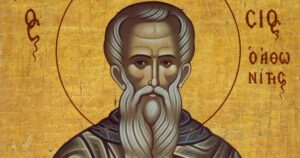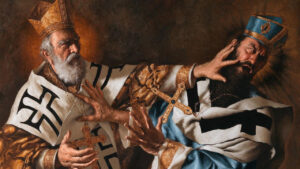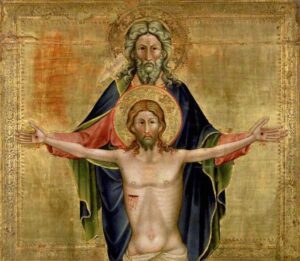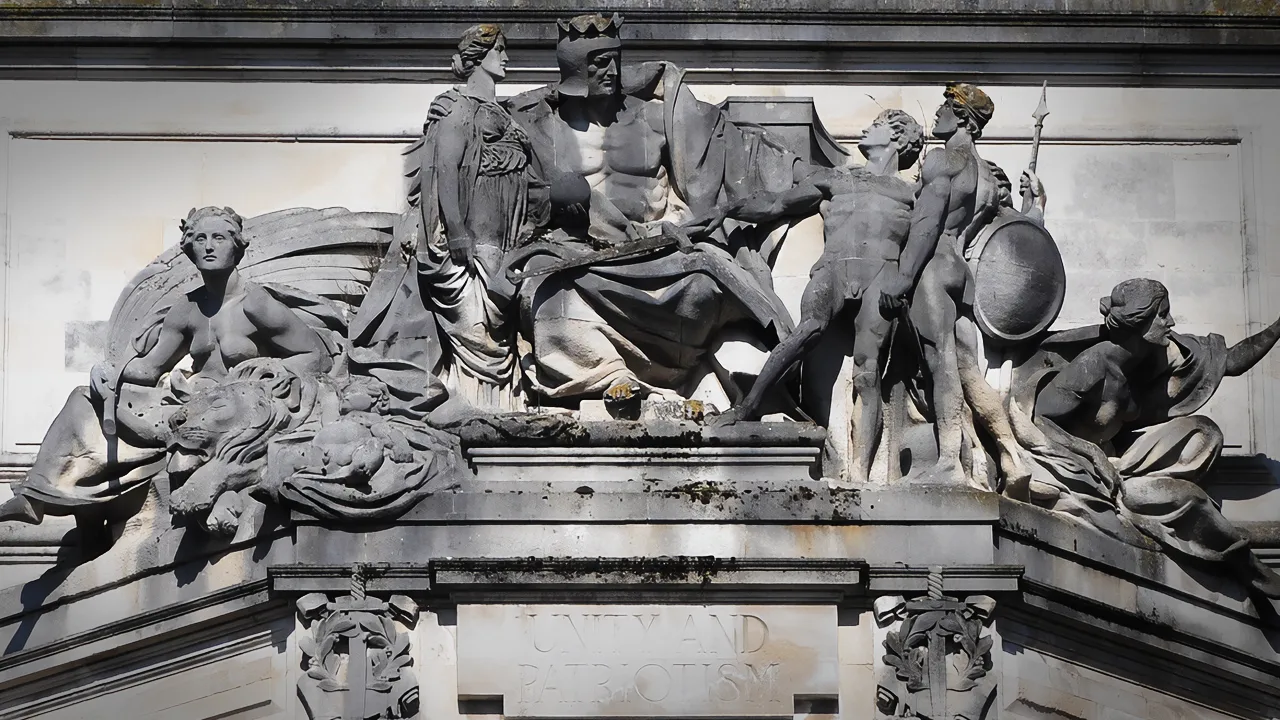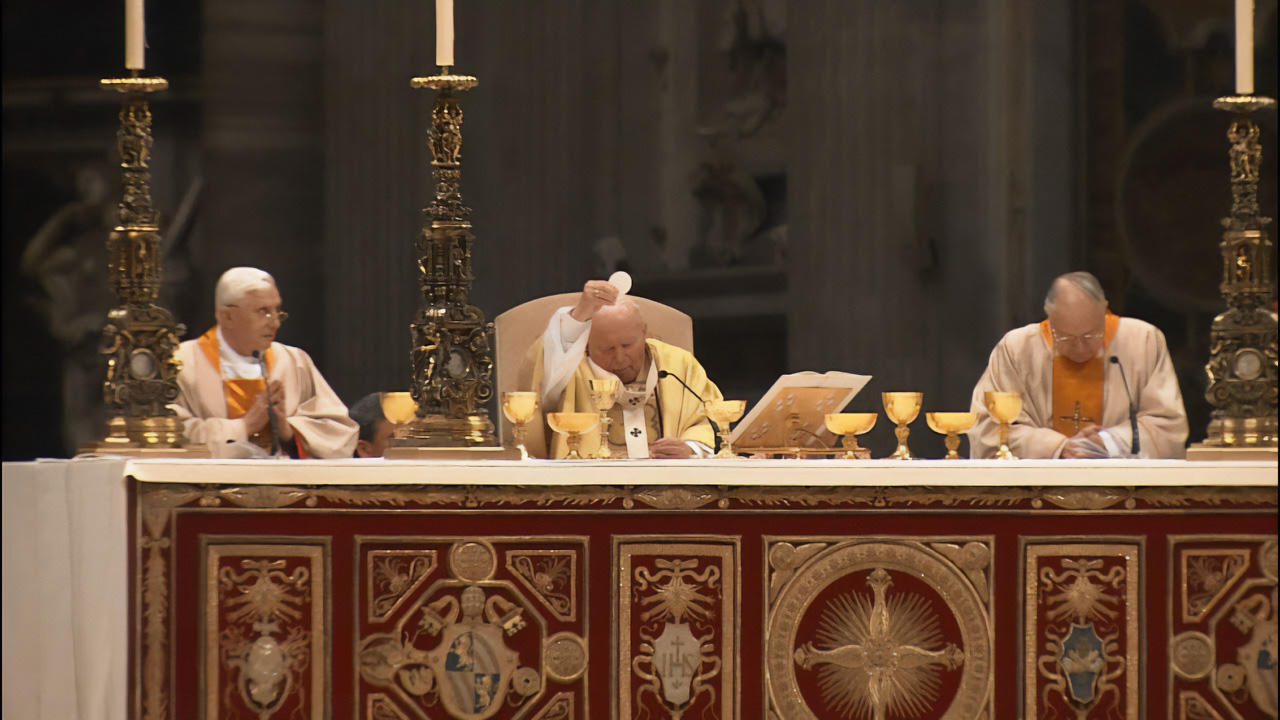Question:
I need to know how dangerous the practice of Yoga gymnastics is for a Christian. What are the risks for me as a Christian believer, since this practice is freely offered in parishes, schools, etc. It is also recommended by Catholic priests (e.g. Fr. Antony de Melo and Fr. Ignacio Larrañaga), who promote Yoga exercises to enter into prayer with God. What advice can you give regarding yoga? I greet you in Christ Jesus.
Response:
Yoga
In traditional Hindu thought, yoga is a set of ascetic techniques and methods of meditation to achieve union with the divinity or the divine. It can also be described as a set of techniques and exercises of asceticism and self-control, ranging from physical exercises and methods, gymnastics, body, breathing, etc., more or less natural, to complicated practices and procedures of mental concentration or meditation, postures, etc. All this is mixed with philosophical-religious ideas typical of Hinduism, with the aim of reaching a mysticism or union with the divine. There are several forms of yoga: classical (expounded by Patañjali), Buddhist, and Jaina. In its technical aspect it needs an initiation, hence it cannot be learned alone, but rather requires one to have a teacher, a guru.[1]
Yoga techniques consist of suppressing states of consciousness, calming mental vibrations and replacing them with an intuitive, beyond rational experience’.[2]
For that, the yogi has to go through eight stages that I list because they are important to make a moral judgment[3]:
- Self-restraint (yama), which implies discipline of the emotions and passions, a simple, hard-working, honest, temperate life, etc.
- The restraint of the mind (niyama), obtained by means of a timely regimen of internal washings, seeking physical purification (without this it would not be able to withstand the difficult exercises of the following stages).
- The postures and attitudes (âsana and mudrâ) which are very numerous (some are known as the ‘lotus’, in which the Buddha is usually figured; the ‘tree’, in which it is supported with only one foot, having the other supported with the plant on the inside of the thigh; the ‘headstand’; etc.). Many mistakenly believe that all yoga is reduced to this, that is to say, they make of it a gymnastic method.
- Breathing exercises (prânâyâma) with their three stages (inhalation, retention, and exhalation; breathing and holding for a determined time).
- The abstracting of the senses from the external world (pratyâhâra).
- The concentration of the mind (dhâranâ) that makes it possible to keep the mind fixed on a certain subject, without the possibility of distraction.
- Control of the will (dhyâna). It is a stage of total detachment from all sensation, of inner calm without any thought.
- Ecstasy (samadhi) or isolation of the true Self from the illusory veils of appearances (mâyâ). It aims at the knowledge of the true Self by the extinguishing of individuality through an extraordinary concentration of thought.
It is often said that these stages are accompanied by extraordinary powers and superhuman knowledge that would correspond to the yogi’s contact with the ‘Truth’; or at least telepathic powers or similar phenomena may manifest.
Medical Problems
As can be seen from what has been said above, Yoga mixes philosophical and religious principles with physical elements (postures, relaxation methods, concentration, etc.).
Is it possible to separate the methodology of bodily self-mastery from its philosophical principles? To some extent it is undeniable. Assuming that a person only uses yoga as a physical exercise and meditation, can this be detrimental?
According to Carlo Rizzo (who was a professor at the chair of Nervous and Mental Diseases at the University of Rome in the sixties), in order to properly perform the physical method that yoga teaches in its early stages, it is necessary to be young and also to be free of cardio-respiratory or pleuro-pulmonary diseases, otherwise some exercises cannot be performed with the necessary intensity and perseverance, resulting in damage to the trainee’s organism. But above all, he had important reservations from the psychiatric point of view regarding the last yogic stages, since such experiments of self-control could favor – in young, immature individuals or those constitutionally provided with an unsound nervous system – the appearance of psychopathological manifestations (hysterical or psychasthenic).[4]
As for those who limit themselves to making use of yoga for what it prescribes for the third or fourth stage, it can only be said that this is a superficial behavior that cannot properly be considered yoga.
Philosophical and theological problems
We must point out some totally justified suspicions regarding the practice of yoga by a Christian.
A) First of all, “in the ideas and techniques of yoga in its various schools and forms, along with natural elements (affirmations or practices that can be useful for self-mastery or prayer), there are elements that can hardly be considered valid, even naturally (for example, the tendency to pantheism, the dissolution of the person and personal activity as the ideal goal of ‘mysticism’, confusing and misleading explanations about human nature and its relations with the rest of reality, undervaluation of aspects of this world, etc.)”[5]
It is true that the physical and psychic exercises of yoga can be separated from the underlying ideas of yoga thought. But this is not always easy to do, and it is especially necessary to consider that most of the authors who divulge yogic practices also participate in the eastern notions (see footnote #6) that lie underneath.
B) If it is not immoral, it is undoubtedly at least very dangerous if the one who resorts to yoga in order to acquire (believing that he will get it in this way) some mental power such as telepathy or any of the related phenomena. This is playing with fire and exposing oneself to awaken some hysterical or paranoid tendency.
C) What about the use of yogic techniques as aids to Christian prayer? It seems to me that the possible erroneous use of these techniques (as of any other inspired by eastern ideas) is sufficiently warned against in the Letter of the Congregation for the Doctrine of the Faith, on Some Aspects of Christian Meditation. This document responds to the value that eastern forms of meditation or methods can have for Christians. In an endnote it clarifies:
The expression “eastern methods” is used to refer to methods which are inspired by Hinduism and Buddhism, such as “Zen,” “Transcendental Meditation” or “Yoga.” Thus it indicates methods of meditation of the non-Christian Far East which today are not infrequently adopted by some Christians also in their meditation. The orientation of the principles and methods contained in this present document is intended to serve as a reference point not just for this problem, but also, in a more general way, for the different forms of prayer practiced nowadays in ecclesial organizations, particularly in associations, movements and groups.[6]
In discussing the erroneous ways of praying, it says[7]:
Even in the first centuries of the Church some incorrect forms of prayer crept in. Some New Testament texts (cf. 1 Jn 4:3; 1 Tim 1:3-7 and 4:3-4) already give hints of their existence. Subsequently, two fundamental deviations came to be identified: Pseudognosticism and Messalianism, both of concern to the Fathers of the Church. There is much to be learned from that experience of primitive Christianity and the reaction of the Fathers which can help in tackling the current problem.
In combating the errors of pseudognosticism[8] the Fathers affirmed that matter is created by God and as such is not evil. Moreover, they maintained that grace, which always has the Holy Spirit as its source is not a good proper to the soul, but must be sought from God as a gift. Consequently, the illumination or superior knowledge of the Spirit (“gnosis”), does not make Christian faith something superfluous. Finally, for the Fathers, the authentic sign of a superior knowledge, the fruit of prayer, is always Christian love.
If the perfection of Christian prayer cannot be evaluated using the sublimity of gnostic knowledge as a basis, neither can it be judged by referring to the experience of the divine, as Messalianism proposed.[9] These false fourth century charismatics identified the grace of the Holy Spirit with the psychological experience of his presence in the soul. In opposing them, the Fathers insisted on the fact that the soul’s union with God in prayer is realized in a mysterious way, and in particular through the sacraments of the Church. Moreover, it can even be achieved through experiences of affliction or desolation. Contrary to the view of the Messalians, these are not necessarily a sign that the Spirit has abandoned a soul. Rather, as masters of spirituality have always clearly acknowledged, they may be an authentic participation in the state of abandonment experienced on the cross by Our Lord, who always remains the model and mediator of prayer.[10]
Both of these forms of error continue to be a temptation for man the sinner. They incite him to try and overcome the distance separating creature from Creator, as though there ought not to be such a distance; to consider the way of Christ on earth, by which he wishes to lead us to the Father, as something now surpassed; to bring down to the level of natural psychology what has been regarded as pure grace, considering it instead as “superior knowledge” or as “experience.”
Such erroneous forms, having reappeared in history from time to time on the fringes of the Church’s prayer, seem once more to impress many Christians, appealing to them as a kind of remedy, be it psychological or spiritual, or as a quick way of finding God.[11]
However, these forms of error, wherever they arise, can be diagnosed very simply. The meditation of the Christian in prayer seeks to grasp the depths of the divine in the salvific works of God in Christ, the Incarnate Word, and in the gift of his Spirit. These divine depths are always revealed to him through the human-earthly dimension. Similar methods of meditation, on the other hand, including those which have their starting-point in the words and deeds of Jesus, try as far as possible to put aside everything that is worldly, sense-perceptible or conceptually limited. It is thus an attempt to ascend to or immerse oneself in the sphere of the divine, which, as such, is neither terrestrial, sense-perceptible nor capable of conceptualization.[12] This tendency, already present in the religious sentiments of the later Greek period (especially in “Neoplatonism”), is found deep in the religious inspiration of many peoples, no sooner than they become aware of the precarious character of their representations of the divine and of their attempts to draw close to it.
With the present diffusion of eastern methods of meditation in the Christian world and in ecclesial communities, we find ourselves faced with a pointed renewal of an attempt, which is not free from dangers and errors, to fuse Christian meditation with that which is non-Christian. Proposals in this direction are numerous and radical to a greater or lesser extent. Some use eastern methods solely as a psycho-physical preparation for a truly Christian contemplation; others go further and, using different techniques, try to generate spiritual experiences similar to those described in the writings of certain Catholic mystics.[13] Still others do not hesitate to place that absolute without image or concepts, which is proper to Buddhist theory,[14] on the same level as the majesty of God revealed in Christ, which towers above finite reality. To this end, they make use of a “negative theology,” which transcends every affirmation seeking to express what God is and denies that the things of this world can offer traces of the infinity of God. Thus they propose abandoning not only meditation on the salvific works accomplished in history by the God of the Old and New Covenant, but also the very idea of the One and Triune God, who is Love, in favor of an immersion “in the indeterminate abyss of the divinity.”[15]
These and similar proposals to harmonize Christian meditation with eastern techniques need to have their contents and methods ever subjected to a thorough-going examination so as to avoid the danger of falling into syncretism.”
In fact, some authors have been fascinated by the eastern trends and intending to use only its methodology, have also ended up assimilating its erroneous philosophical principles. A sufficient example is the Jesuit Anthony de Mello, whose work has been the object of a Notification of the Congregation for the Doctrine of the Faith’, dated June 24, 1998. This author, says the aforementioned document: “In place of the revelation which has come in the person of Jesus Christ, he substitutes an intuition of God without form or image, to the point of speaking of God as a pure void.” The Congregation for the Doctrine of the Faith noted that these “positions are incompatible with the Catholic faith and can cause grave harm.”
What to say to those who consider themselves capable of abstracting the physical mechanisms of relaxation and concentration from the whole set of philosophical, religious and moral equivocal elements that lie behind authentic yoga, in order to use them only as aids of their method of study or prayer? It must be said that morality can raise no particular objections other than those indicated above. Along with these objections, prudence adds the experience which shows that, in practice, among those who venture into it, there are few who are able to avoid being trapped in pseudo-eastern thinking.
Fr. Miguel A. Fuentes, IVE
—NOTES—
[1] Cf. J. Roger Rivière, Yoga, en Gran Encyclopedia Rialp, t. 23, pp. 802-803.
[2] Cf. J. Roger Rivière, p. 803.
[3] Cf. Carlo Rizzo, El Yoga, en: AA.VV., Cien problemas de conciencia, Difusión, Bs.As. 1962, pp. 305-317.
[4] Cf. Carlo Rizzo, loc. cit., pp. 313-314.
[5] Cf. J. Roger Rivière, p. 802.
[6] Congregation (now “Dicastery”) for the Doctrine of the Faith, Letter to the Bishops of the Catholic Church on Some Aspects of Christian Meditation, 1989, endnote 1. (See here).
[7] CDF, Some Aspects of Christian Meditation, n. 8-12.
[8] Pseudognosticism considered matter as something impure and degraded which enveloped the soul in an ignorance from which prayer had to free it, thereby raising it to true superior knowledge and so to a pure state. Of course not everyone was capable of this, only those who were truly spiritual; for simple believers, faith and the observance of the commandments of Christ were sufficient. (CDF, Endnote #8)
[9] The Messalians were already denounced by St. Ephraim Syrus (Hymni contra Haereses 22, 4, ed. E. Beck, CSCO 169, 1957, p. 79) and later, among others, by Epiphanius of Salamina (Panarion, also called Adversus Haereses: PG 41, 156-1200; PG 42, 9-832), and Amphilochius, Bishop of Iconium (Contra haereticos: G. Ficker, Amphilochiana I, Leipzig 1906, 21-77). (CDF, Endnote #9)
[10] Cf., for example, St. John of the Cross, Subida del Monte Carmelo, II, chap. 7. 11. (CDF, Endnote #10)
[11] In the Middle Ages there existed extreme trends on the fringe of the Church. These were described not without irony, by one of the great Christian contemplatives, the Flemish Jan van Ruysbroek. He distinguished three types of deviations in the mystical life (Die gheestelike Brulocht 228, 12-230, 17; 230, 18-32, 22; 232, 23-236, 6) and made a general critique of these forms (236, 7-237, 29). Similar techniques were subsequently identified and dismissed by St. Teresa of Avila who perceptively observed that “the very care taken not to think about anything will arouse the mind to think a great deal,” and that the separation of the mystery of Christ from Christian meditation is always a form of “betrayal” (see: St. Teresa of Jesus, Vida 12, 5 and 22, 1-5). (CDF, Endnote #11)
[12] Pope John Paul II has pointed out to the whole Church the example and the doctrine of St. Teresa of Avila who in her life had to reject the temptation of certain methods which proposed a leaving aside of the humanity of Christ in favor of a vague self-immersion in the abyss of the divinity. In a homily given on November 1st, 1982, he said that the call of Teresa of Jesus advocating a prayer completely centered on Christ “is valid, even in our day, against some methods of prayer which are not inspired by the Gospel and which in practice tend to set Christ aside in preference for a mental void which makes no sense in Christianity. Any method of prayer is valid insofar as it is inspired by Christ and leads to Christ who is the Way, the Truth and the Life (cf. Jn 14:6).” See: Homilia Abulae habita in honorem Sanctae Teresiae: AAS 75 (1983), 256-257. (CDF, Endnote #12)
[13] See, for example, The Cloud of Unknowing, a spiritual work by an anonymous English writer of the fourteenth century. (CDF, Endnote #13)
[14] In Buddhist religious texts, the concept of “Nirvana” is understood as a state of quiet consisting in the extinction of every tangible reality insofar as it is transient, and as such delusive and sorrowful. (CDF, Endnote #14)
[15] Meister Eckhart speaks of an immersion “in the indeterminate abyss of the divinity” which is a “darkness in which the light of the Trinity never shines.” Cf. Sermo “Ave Gratia Plena” in fine (J. Quint, Deutsche Predigten und Traktate, Hanser 1955, 261). (CDF, Endnote #15)
Original Post: Here
Other Post:


